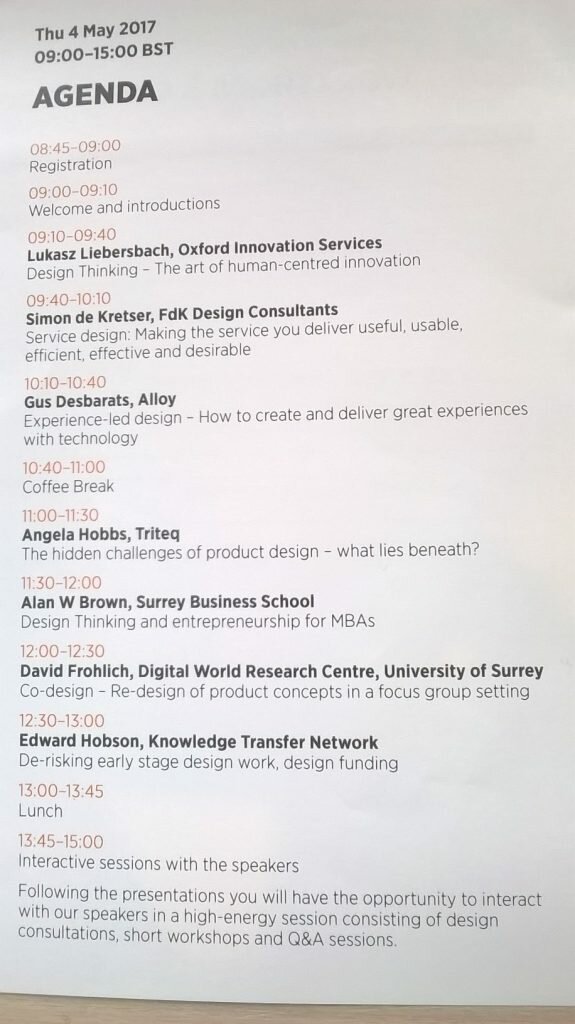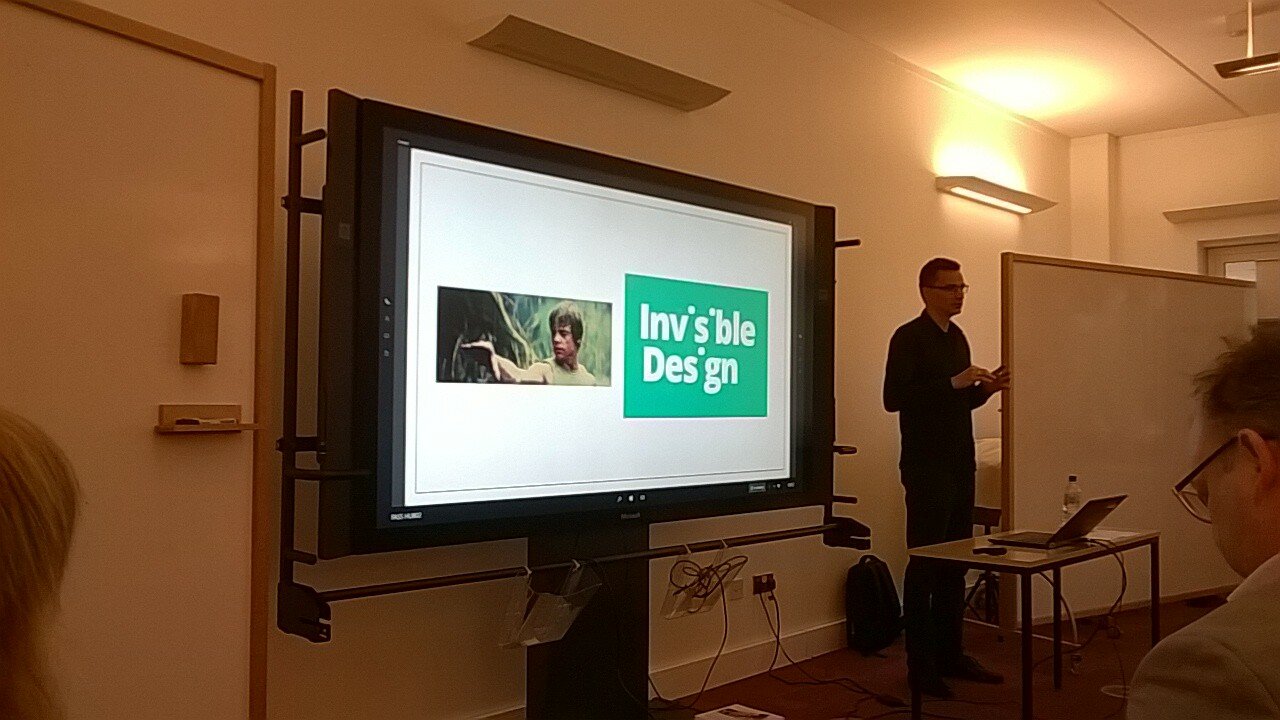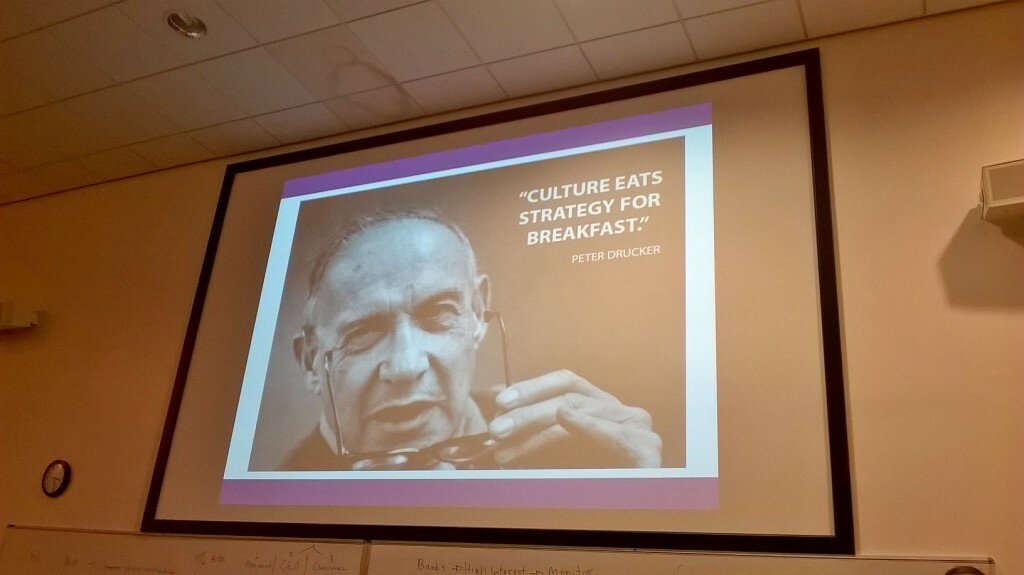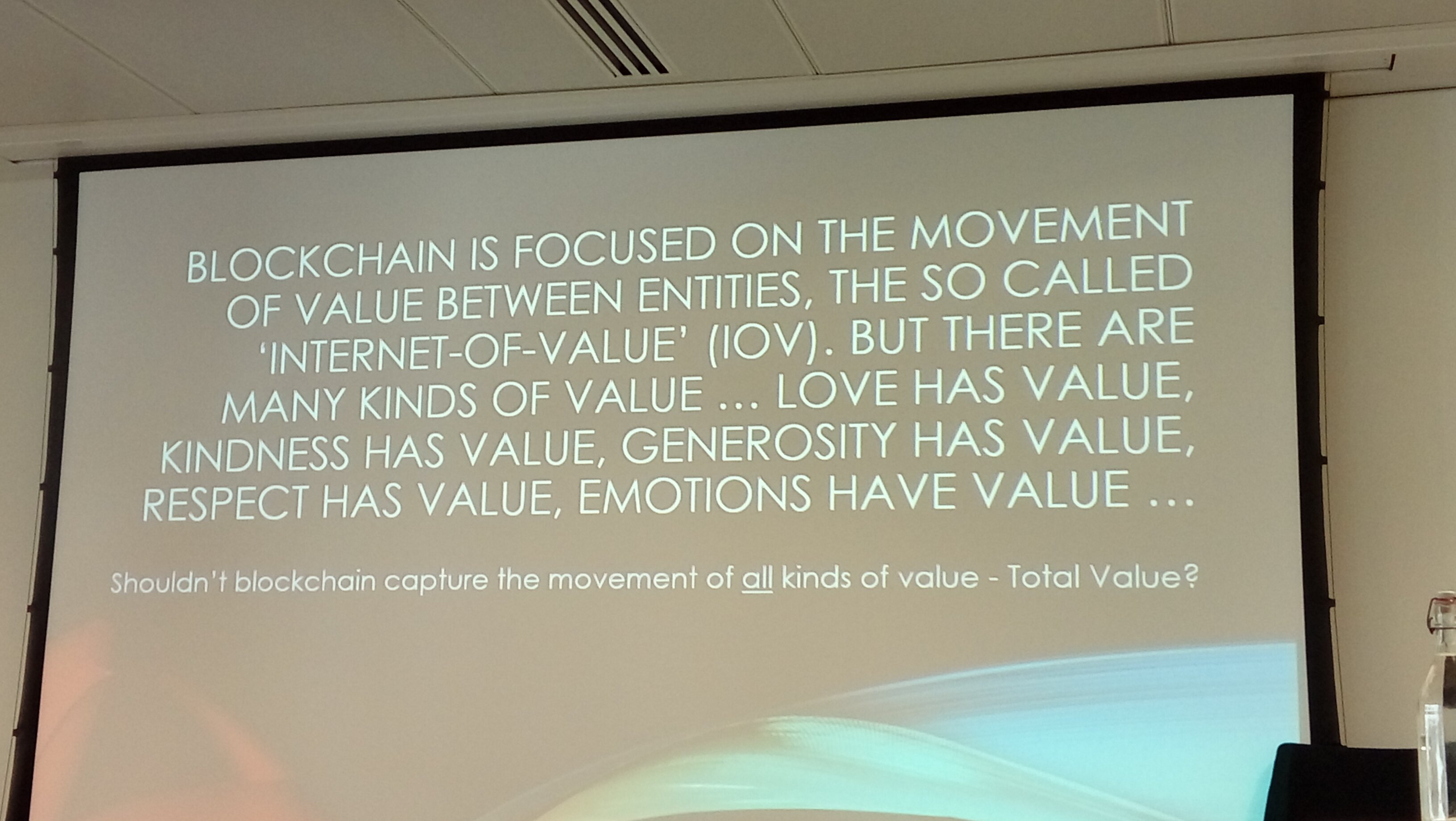The Business Insights Lab here at Surrey was packed on Star Wars Day, with attendees from academic institutions, business- and growth- hubs, SMEs, LEs, interactive studios, and more for ’ ‘Wake-Up Design’ conference. In keeping with the intergalactic theme, moderator framed the role of design like ‘the Force’: powerful, but invisible.
It was a full day of inspiring presentations and interactive sessions, discovering different and unexpected ways in which design can help with innovation: design thinking, service design, experience design, product design, co-design and design funding.

CoDE was thrilled to be one of the sponsors for this fascinating event, with two of our members, Prof Alan Brown and Prof David Frohlich, speaking about aspects of design.
There’s a strong link between design and innovation: design is the principle force behind new products and experiences, and companies like were trailblazers. Design has evolved from making objects and visual communication, to ‘design thinking’ as an actual framework for innovation; it’s bringing the skill-set of designers to non-designers.
But what does this really mean?
Everyone who was ever in business says they listen to their customers. However, if the customer’s view isn’t feeding into what the supplier wants to offer, it’s often ignored. Design thinking turns this process around, and puts the user at the centre of the design process, rather than at the end of a feedback chain. In essence:
- Discover the , and turn this into insights;
- Foster collaboration between all areas within the business in order to address this need in the most effective and elegant way; and
- Validate with simple, speedy prototypes that aren’t perfect, and then move on.
The outcome becomes obvious: you’ll make your incumbent customers delighted, and you’ll attract new customers. Poor service is often just a symptom of poor Service Design.
What to do next, to become a design-led organisation?
- Keep asking ‘Why?’ – five times for each issue – to find the heart of the problem, not just the symptom;
- Allow ANY ideas into the collaborative session: according to speaker Simon de Kretser, ‘Ideas often come from the adjacent thought’;
- See service as a process, as well as a deliverable;
- Absorb and record your OWN experiences, and reflect on what that tells you about your users;
- The devil is in the detail, so DO sweat the small stuff.
Wake Up Design gave us an insight into what it really means to think and solve problems like a designer, plus the rare opportunity to network and consult on our projects; we had some great conversations, and there are lots of opportunities to follow up.
Keep an eye on what’s going on in the Lab, and make sure to join us next time.






